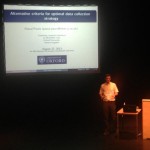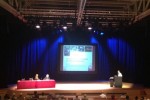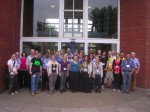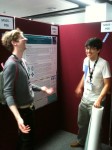 J├®r├┤meŌĆÖs Part II project used machine learning techniques to develop predictive models for crystallisation. He has returned to the group for a further 3 years and will be extending his earlier work to the study materials at the edge of crystallinity. He is currently serving as captain of┬Ā Worcester MCR football team.
J├®r├┤meŌĆÖs Part II project used machine learning techniques to develop predictive models for crystallisation. He has returned to the group for a further 3 years and will be extending his earlier work to the study materials at the edge of crystallinity. He is currently serving as captain of┬Ā Worcester MCR football team.
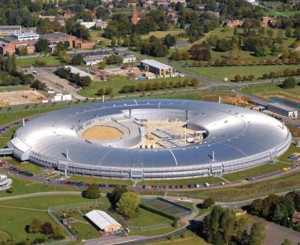 The fourth meeting of the Red Kite Network was held on Monday 9th September 2013, at Diamond Light Source.
The fourth meeting of the Red Kite Network was held on Monday 9th September 2013, at Diamond Light Source.
The meeting included a tour of the synchrotron and a full programme of talks by local speakers, focussed on the use of synchrotron radiation as a structural probe.
Programme
1:15 pm Dr. Harriott Nowell (Diamond) Introduction and Welcome
1:20 pm Dr. Steve Thompson (Diamond) ŌĆ£I11 Upgrade ProjectŌĆØ
1.50 pm Dr. Philip Chater (Diamond) ŌĆ£Structural Chemistry Through the Length ScalesŌĆØ
2.20 pm Tours, Tea, Coffee and Posters in R22
3.50 pm Dr. Anna Warren (Diamond) ŌĆ£X-ray Imaging as a Tool for Crystal LocationŌĆØ
4.10 pm Jon Treacy (Diamond/Manchester) ŌĆ£SXRD of Metal OxidesŌĆØ
4.30 pm Rich Knighton (Oxford) ŌĆ£Towards Selective Anion Binding By Templated Interlocked StructuresŌĆØ
4.50 pm Karim Sutton (Oxford) ŌĆ£Big Methods for Small MoleculesŌĆØ
5.10 pm Drinks reception and Posters
The meeting closed with the award of prizes for best posters.
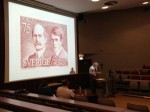 This year the European Crystsallographic Meeting was hosted in the UK for the first time since 1977. The meeting at the University of Warwick co-incided with the Bragg Centenary and included a fantastic collection of historical artefacts associated with the Braggs including scientific instruments, models, letters, portraits and notebooks organized by Mike Glazer and Pam Thomas.
This year the European Crystsallographic Meeting was hosted in the UK for the first time since 1977. The meeting at the University of Warwick co-incided with the Bragg Centenary and included a fantastic collection of historical artefacts associated with the Braggs including scientific instruments, models, letters, portraits and notebooks organized by Mike Glazer and Pam Thomas.
Contributions originating from Chem. Cryst.┬Ā included:
Richard I. Cooper
Space groups and symmetry (ECACOMSIG Computing School lecture and workshop)
Pascal Parois
Alternative criteria for optimal data collection strategy (Talk in the Photocrystallography session)
Kirsten Christensen
Molecular Modulated Structures: Rare Today, Ubiquitous Tomorrow? (Talk in Aperiodic Crystals: Structure, Dynamics and Magnetism session)
![]() The 21st International Conference on the Chemistry of the Organic Solid State was held from 5th-9th August 2013 at St Catherine’s College in Oxford. ICCOSS deals with various aspects of the crystalline state and reactivity of organic and hybrid materials from preparation to characterization. It includes the investigation of crystal structures and supramolecular architectures, crystal growth and design, inclusion compounds, topochemical reactions, nanostructures, heterogeneous interfaces.
The 21st International Conference on the Chemistry of the Organic Solid State was held from 5th-9th August 2013 at St Catherine’s College in Oxford. ICCOSS deals with various aspects of the crystalline state and reactivity of organic and hybrid materials from preparation to characterization. It includes the investigation of crystal structures and supramolecular architectures, crystal growth and design, inclusion compounds, topochemical reactions, nanostructures, heterogeneous interfaces.
Amber Thompson presented a talk entitled Modulated structures: a curiosity today, ubiquitous tomorrow? and Richard Cooper presented work carried out with Jerome Wicker: Will it Crystallize?
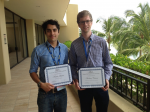 The Annual Meeting of the American Crytsallographic Association was held from July 20-24 in Honolulu, Hawaii. The programme included a broad range of crystallographic topics on structure validation, materials for a sustainable future, structural enzymology, thin films, data mining, and neutron & synchrotron sources.
The Annual Meeting of the American Crytsallographic Association was held from July 20-24 in Honolulu, Hawaii. The programme included a broad range of crystallographic topics on structure validation, materials for a sustainable future, structural enzymology, thin films, data mining, and neutron & synchrotron sources.
Karim Sutton represented Chem Cryst, and was awarded a Margaret C. Etter Student Lecturer Award for his contribution on the application of macromolecular phasing techniques to small molecule crystallography. Andrew Cairns from Oxford also attended and gave a talk on designing new materials with large negative linear compressibility, for which he was also awarded a Student Lecturer Award. Congratualtions to them both!
 The University of Oxford Botanic Garden has organised a series of guided science walks through the Botanic Garden this summer.
The University of Oxford Botanic Garden has organised a series of guided science walks through the Botanic Garden this summer.
Richard Cooper will be leading the first walk on 30th May entitled “How Do we Know what Molecules Look Like?”┬Ā A rich variety of molecules occur naturally in plants and some have incredible properties: from bitter tastes to anti-cancer activity. This walk will take in plants in the Botanic Garden from which interesting molecules have been discovered and describe how we can use analytical techniques to understand their shape and functions.
These guided walks will take place at 6.30pm at the Botanic Garden and will last approximately an hour followed by a glass of wine or soft drink. Tickets are avaliable from the University web site.
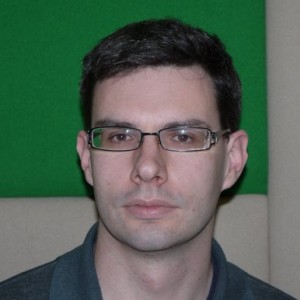 Pascal is a senior post-doctoral researcher working on refinement and analysis of diffraction from very short lived excited state chemical species. He obtained a PhD with Dr Mark Murrie at Glasgow University studying the effects of pressure on single molecular magnets, and has since held posts at Utrecht University and University of Nancy working on software development and time-resolved diffraction. Pascal maintains a personal blog on chemical and crystallographic software matters, and in his spare time enjoys hiking and genealogy.
Pascal is a senior post-doctoral researcher working on refinement and analysis of diffraction from very short lived excited state chemical species. He obtained a PhD with Dr Mark Murrie at Glasgow University studying the effects of pressure on single molecular magnets, and has since held posts at Utrecht University and University of Nancy working on software development and time-resolved diffraction. Pascal maintains a personal blog on chemical and crystallographic software matters, and in his spare time enjoys hiking and genealogy.
Dr Pavlo Solntsev from the Department of Chemistry, University of Minnesota, USA, has written a detailed manual demonstrating the principles of modelling disorder in CRYSTALS. It is available here. Below are two videos which accompany the material in the manual. Pavlo can be contacted at pavlo.solntsev at gmail.com.
J. Sync. Rad (2013). 20, 200ŌĆō204. [┬Ādoi:10.1107/S0909049512044007 ]
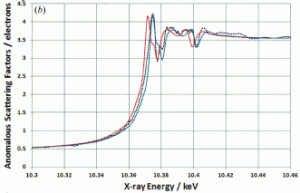 Overlapping absorption edges will occur when an element is present in multiple oxidation states within a material. DetOx is a program for partitioning overlapping X-ray absorption spectra into contributions from individual atomic species and computing the dependence of the anomalous scattering factors on X-ray energy. It is demonstrated how these results can be used in combination with X-ray diffraction data to determine the oxidation state of ions at speci’¼üc sites in a mixed-valance material, GaCl2 .
Overlapping absorption edges will occur when an element is present in multiple oxidation states within a material. DetOx is a program for partitioning overlapping X-ray absorption spectra into contributions from individual atomic species and computing the dependence of the anomalous scattering factors on X-ray energy. It is demonstrated how these results can be used in combination with X-ray diffraction data to determine the oxidation state of ions at speci’¼üc sites in a mixed-valance material, GaCl2 .
Electronic reprints
Publisher’s copy
J. Appl. Cryst. (2012). 45, 1057ŌĆō1060. [┬Ādoi:10.1107/S0021889812035790 ]
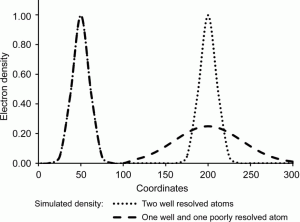 The traditional Waser distance restraint, the rigid-bond restraint and atomic displacement parameter (ADP) similarity restraints have an equal influence on both atoms involved in the restraint. This may be inappropriate in cases where it can reasonably be expected that the precision of the determination of the positional parameters and ADPs is not equal, e.g. towards the extremities of a librating structure or where one atom is a significantly stronger scatterer than the other. In these cases, the traditional restraint feeds information from the poorly defined atom to the better defined atom, with the possibility that its characteristics become degraded. The modified restraint described here feeds information from the better defined atom to the more poorly defined atom with minimal feedback.
The traditional Waser distance restraint, the rigid-bond restraint and atomic displacement parameter (ADP) similarity restraints have an equal influence on both atoms involved in the restraint. This may be inappropriate in cases where it can reasonably be expected that the precision of the determination of the positional parameters and ADPs is not equal, e.g. towards the extremities of a librating structure or where one atom is a significantly stronger scatterer than the other. In these cases, the traditional restraint feeds information from the poorly defined atom to the better defined atom, with the possibility that its characteristics become degraded. The modified restraint described here feeds information from the better defined atom to the more poorly defined atom with minimal feedback.
Electronic reprints
Publisher’s copy
